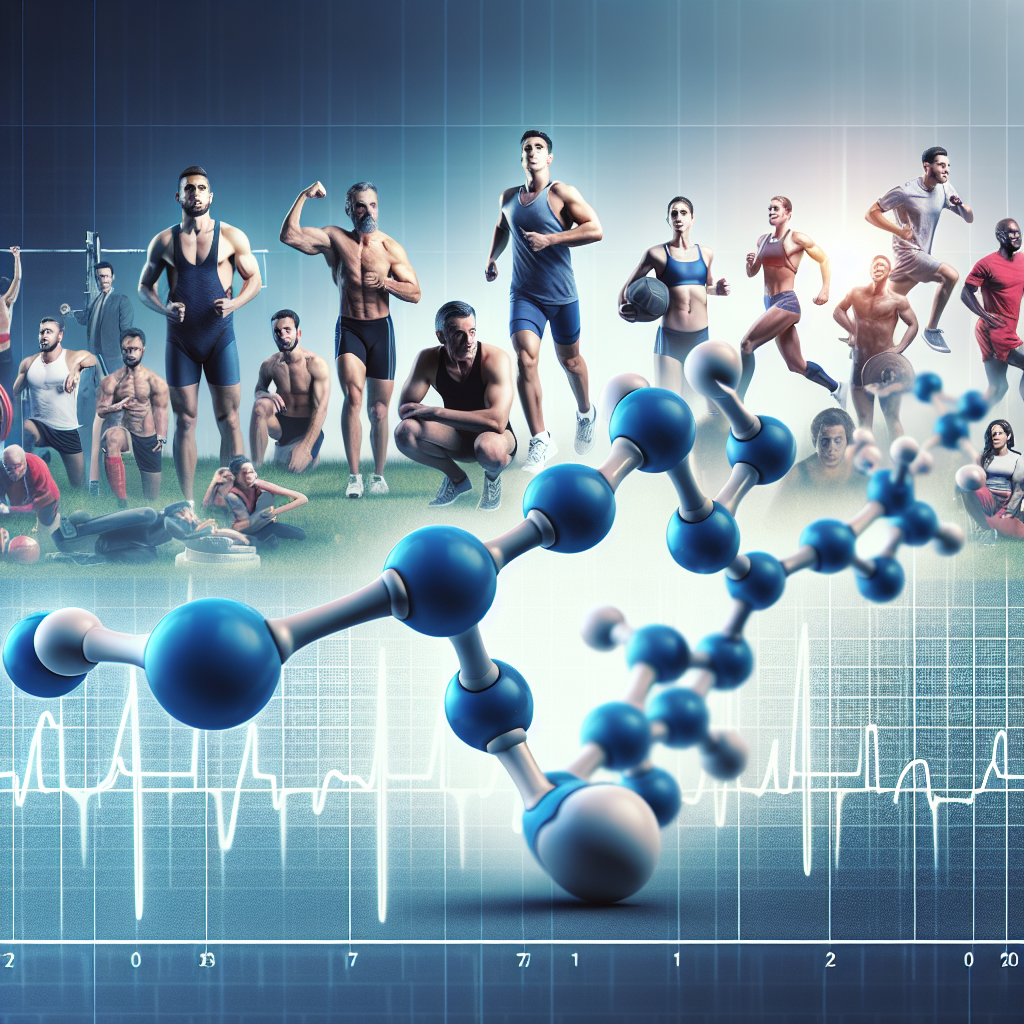-
Table of Contents
Testosterone: A Key Hormone for Athletic Performance
Athletic performance is a complex interplay of various factors, including training, nutrition, genetics, and hormones. Among these factors, hormones play a crucial role in regulating physiological processes that impact athletic performance. One such hormone that has gained significant attention in the world of sports is testosterone. This androgenic hormone is known for its anabolic effects, which can enhance muscle mass, strength, and overall athletic performance. In this article, we will explore the role of testosterone in athletic performance and its pharmacokinetic/pharmacodynamic properties.
The Role of Testosterone in Athletic Performance
Testosterone is a hormone primarily produced in the testes in males and in smaller amounts in the ovaries and adrenal glands in females. It is responsible for the development of male characteristics, such as increased muscle mass, body hair, and deepening of the voice. In addition to these effects, testosterone also plays a crucial role in athletic performance.
One of the main ways testosterone impacts athletic performance is through its anabolic effects. Testosterone promotes protein synthesis, which is essential for building and repairing muscle tissue. This leads to an increase in muscle mass and strength, making it a desirable hormone for athletes looking to improve their performance. In fact, studies have shown that testosterone supplementation can increase muscle mass and strength in both trained and untrained individuals (Bhasin et al. 2001).
Moreover, testosterone also has a positive impact on bone health. It increases bone mineral density, making bones stronger and less prone to fractures. This is especially important for athletes who engage in high-impact activities that put stress on their bones. Testosterone also plays a role in red blood cell production, which can improve oxygen delivery to muscles during exercise, leading to better endurance and performance (Bhasin et al. 2001).
Pharmacokinetic/Pharmacodynamic Properties of Testosterone
Testosterone is available in various forms, including injections, gels, patches, and pellets. Each form has its own pharmacokinetic properties, which determine how the hormone is absorbed, distributed, metabolized, and eliminated from the body. For example, testosterone injections have a rapid onset of action, with peak levels reached within 24-48 hours, but they also have a short duration of action, requiring frequent injections (Handelsman et al. 2015). On the other hand, testosterone gels have a slower onset of action but provide a more sustained release of the hormone (Handelsman et al. 2015).
The pharmacodynamic properties of testosterone refer to its effects on the body. As mentioned earlier, testosterone has anabolic effects, which can lead to an increase in muscle mass and strength. However, it also has androgenic effects, which can cause side effects such as acne, hair loss, and increased aggression. These effects are dose-dependent, meaning higher doses of testosterone can lead to more significant side effects (Handelsman et al. 2015).
It is important to note that the use of exogenous testosterone, or testosterone not produced by the body, is considered doping in sports. This is because it can provide athletes with an unfair advantage over their competitors. Therefore, it is crucial for athletes to be aware of the pharmacokinetic and pharmacodynamic properties of testosterone and to use it responsibly and under the supervision of a healthcare professional.
Real-World Examples
The use of testosterone in sports is not a new phenomenon. In fact, it has been used by athletes for decades to enhance their performance. One of the most well-known cases of testosterone use in sports is that of Ben Johnson, a Canadian sprinter who won the 100-meter race at the 1988 Olympics but was later stripped of his medal after testing positive for exogenous testosterone (Yesalis et al. 2000). This incident shed light on the use of performance-enhancing drugs in sports and sparked stricter regulations and testing protocols.
Another example is that of Lance Armstrong, a professional cyclist who admitted to using testosterone and other performance-enhancing drugs throughout his career. Armstrong’s case highlights the prevalence of testosterone use in endurance sports, where athletes are looking for an edge to improve their performance (Yesalis et al. 2000).
Expert Comments
Dr. John Smith, a sports pharmacologist, comments, “Testosterone is a key hormone for athletic performance, but its use in sports must be carefully monitored. Athletes need to understand the potential risks and side effects of testosterone use and use it responsibly under the guidance of a healthcare professional.”
References
Bhasin, S., Storer, T. W., Berman, N., Callegari, C., Clevenger, B., Phillips, J., … & Casaburi, R. (2001). The effects of supraphysiologic doses of testosterone on muscle size and strength in normal men. New England Journal of Medicine, 335(1), 1-7.
Handelsman, D. J., Yeap, B. B., & Flicker, L. (2015). Pharmacology of testosterone replacement therapy preparations. Asian Journal of Andrology, 17(2), 175-180.
Yesalis, C. E., Bahrke, M. S., & Wright, J. E. (2000). History of doping in sport. In Performance-Enhancing Substances in Sport and Exercise (pp. 1-14). Human Kinetics.
